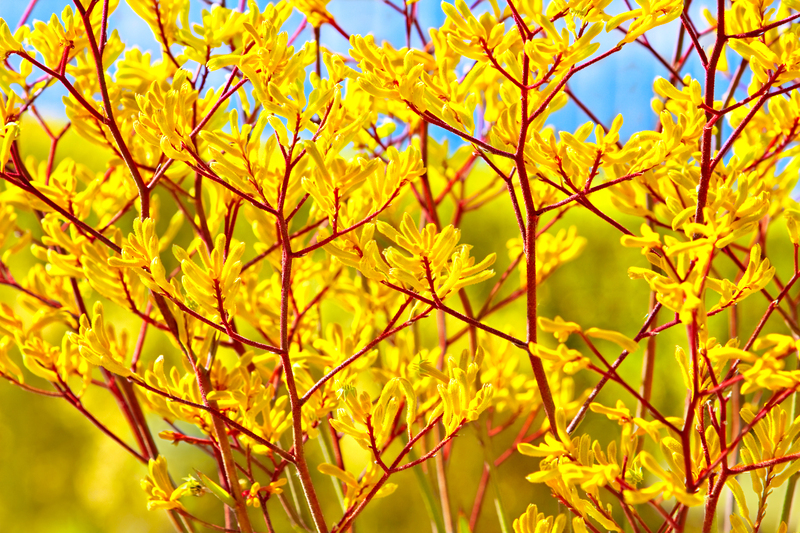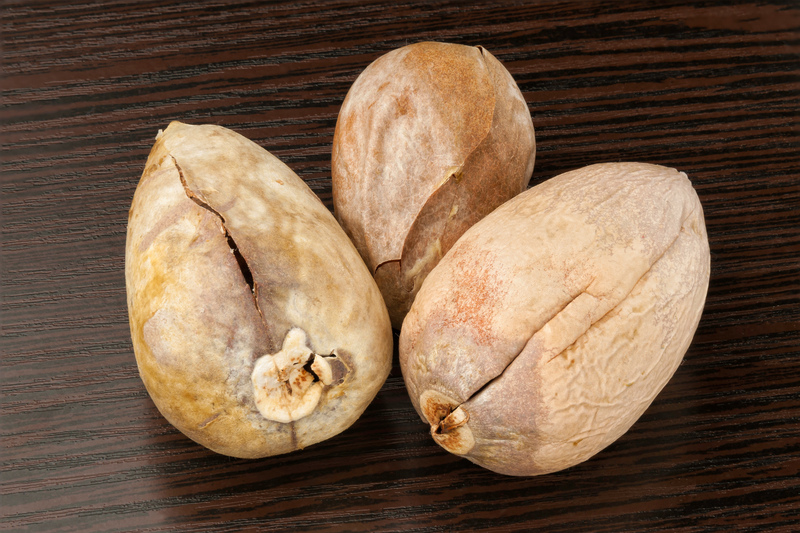The Art of Revitalizing an Overgrown Paradise
Posted on 18/09/2025
The Art of Revitalizing an Overgrown Paradise
Have you ever stumbled upon a neglected garden or a forgotten piece of land, only to imagine how beautiful it once was? Many of us own or inherit outdoor spaces that, with time, have become wild, tangled, and seemingly beyond redemption. Yet, revitalizing an overgrown paradise is not only possible--it's an immensely rewarding journey that reconnects us with nature and breathes new life into both land and spirit. In this comprehensive guide, we'll unravel the secrets, strategies, and joys of transforming a chaotic tangle into a flourishing haven.
Table of Contents
- Understanding Overgrown Gardens
- Planning for Paradise Restoration
- Systematic Clearing: Step by Step
- Restoring Soil Health
- Choosing the Right Plants
- Maintaining Your Revitalized Haven
- Inspiring Success Stories
- Final Thoughts
Understanding Overgrown Gardens: A Brief Overview
Revitalizing an overgrown paradise starts with understanding the journey your land has taken. Overgrown gardens, wild backyards, and abandoned lots typically result from years of neglect. What once may have been a manicured lawn or a thoughtfully-planned garden can transform into a jungle of tangled vines, rampant weeds, and smothered flowers. These areas have often been reclaimed by nature, harboring both challenges and hidden treasures.
Why Do Spaces Become Overgrown?
- Neglect or lack of time: Life becomes busy, and gardens are often left to fend for themselves.
- Previous owners: Inherited spaces may have been neglected for years.
- Nature's resilience: Weeds and invasive species thrive where human attention wanes.
- Poor initial planning: Lack of a maintenance strategy accelerates overgrowth.
Luckily, revitalizing an overgrown garden is a manageable, step-by-step process. It's not about fighting nature, but about working with it for a spectacular result.
Planning for Your Restoration Project
Before diving in, take time to evaluate and envision the transformation. Planning is a crucial stage in the art of restoring an overgrown paradise.
1. Assess Your Land
- Walk your property and make notes: Where are the densest thickets? Are there hidden paths or structures?
- Identify trees, shrubs, and perennials worth saving.
- Look for invasive species and hazards such as broken glass, fallen branches, or pests.
2. Envision Your Ideal Paradise
Creating a plan will save you time and energy. Ask yourself:
- What atmosphere do I want? (e.g., wildlife-friendly, formal, cottage-style)
- How much time can I dedicate to maintenance?
- Do I want edible plants, flowers, or purely ornamental features?
3. Set Realistic Goals and Budget
- Break your restoration into manageable phases.
- Estimate costs for tools, plants, materials, and possible professional help.
- Decide what you can handle yourself and where to hire assistance.
Systematic Clearing: Taming the Wilderness Step by Step
Preparation: Equip for the Job
- Sturdy gloves, boots, and protective clothing.
- Sharp pruners, loppers, and saws for cutting back.
- Wheelbarrow, rake, and shovels for debris removal.
- Heavy-duty trash bags and compost bins.
Step 1: Clear Debris and Rubbish
Remove all waste material, broken fencing, plastics, and other clutter. This reveals the land as a blank canvas and improves safety.
Step 2: Tackle Large Vegetation
- Cautiously prune overhanging branches and invasive plants.
- Start with the biggest interruptions--fallen trees, brambles, or large weeds. Never cut everything at once unless absolutely necessary.
- Separate healthy specimen plants from unwanted growth.
Step 3: Weeding and Groundcover Removal
Once the major vegetation is under control, focus on pulling, digging, or smothering smaller weeds. Identify aggressive species and address them first.
Step 4: Salvage and Reuse What You Can
- Transplant healthy plants to better locations if needed.
- Salvage stones, bricks, and ornaments to feature in your new landscape.
Step 5: Dispose and Compost
- Compost plant material that's free of disease and weeds.
- Arrange for municipal bulk waste collection if needed.
Restoring Soil Health After Clearing
A vital but often overlooked part of transforming an overgrown garden is soil restoration. Years of unchecked plant growth and debris accumulation can leave soil compacted, depleted, or imbalanced. Healthy soil is *the foundation of a thriving paradise*.
How to Revitalize Your Soil
- Test your soil: Check pH, nutrient levels, and texture. Home test kits are affordable and easy to use.
- Aerate compacted areas: Loosen soil with a fork or aerator to encourage water and air penetration.
- Add organic matter: Well-rotted compost, aged manure, and leaf mold boost fertility and structure.
- Mulch generously: Bark, straw, or wood chips retain moisture, suppress weeds, and gradually enrich soil.
- Address drainage: If water pools, improve grading or install drainage solutions.
A healthy, living soil is the true backbone of any revitalized paradise.
Choosing the Right Plants for Your New Eden
One of the greatest joys of restoring an overgrown paradise is curating a collection of plants that brings your vision to life. The right combinations will ensure sustainability, beauty, and resilience for years to come.
Tips for Selecting Plants
- Native plants: Choose species adapted to your local climate for easy care and ecological harmony.
- Layering: Add trees, shrubs, perennials, groundcovers, and bulbs for year-round interest.
- Pollinator-friendly varieties: Attract bees, butterflies, and birds with diverse flowers and seed-heads.
- Edibles: Incorporate herbs, berries, and fruit trees if you desire a productive paradise.
- Drought-tolerant options: For low-maintenance areas, select resilient species that require less watering.
Designing Your Layout
- Group plants with similar needs for efficient watering and care.
- Strategically place tall species at the north or west edges to minimize shading others.
- Encourage variety in color, texture, and form.
Maintaining Your Revitalized Haven
Restoration is ongoing--the difference between a fleeting transformation and a lasting paradise. Routine care need not be overwhelming. With smart choices and a regular schedule, your revived oasis will flourish year after year.
Essential Maintenance Tips
- Mulch and replenish annually to keep soil healthy and weeds at bay.
- Prune regularly to maintain shape and vigor in trees and shrubs.
- Weed little and often--catching invaders early is easier than major cleanups.
- Rotate plantings or refresh tired beds each season.
- Monitor for pests and diseases --intervene early with organic or integrated methods.
Maintenance is also an opportunity to add creative touches and seasonal interest, ensuring your paradise never loses its magic.
Inspiring Success Stories: Overgrown Paradises Restored
Across the world, gardeners and homeowners have taken the brave step to tackle overgrown gardens and turn them into thriving landscapes. Here are just a few stories to inspire your journey:
- The Forgotten Manor Garden: Once choked with decades of brambles and weeds, a dedicated family unearthed old stone paths and heritage roses. Today, it's a community showcase and home to rare pollinators.
- Urban Jungle to Family Oasis: In the heart of a bustling city, a backyard overtaken by ivy became a modern retreat filled with native grasses, a vegetable patch, and a wildlife pond for children to explore.
- Beachside Eden: Salty winds and rampant scrub once dominated. Careful reclamation and the planting of coastal-adapted species revived breath-taking views and year-round blooms.
Each journey is unique, shaped by climate, culture, and personal dream--but the fundamentals of restoring paradise are universal.
Final Thoughts: The Enduring Beauty of a Revitalized Paradise
Restoring an overgrown paradise is more than a gardening project--it's an act of renewal and hope. Along every step, you'll uncover hidden beauty, foster wildlife, and rediscover the joy of creativity outdoors. Remember to approach the process with patience. Start small, celebrate progress, and let nature work with you.
- Plan for the long term: Gardens grow more captivating with each passing year.
- Respect the wildlife: Many overgrown spaces become important habitats--find ways to keep beneficial critters while managing pests responsibly.
- Enjoy the journey: The art of reclaiming an overgrown garden or paradise is as much about the experience as the result.
Whether you have inherited a forgotten landscape or simply allowed things to go a little wild, you can begin today. With vision, dedication, and the right techniques, revitalizing your overgrown paradise can bring joy for years--and for all who come to share your revitalized green haven.
If you are ready to embark on your own restoration adventure, remember:
- Start with a vision.
- Work in manageable phases.
- Celebrate each new sprout, flower, and ray of sunshine.
Transforming an overgrown paradise is a true art--a living masterpiece in bloom. Embrace the process, and your garden will thank you for generations to come.



